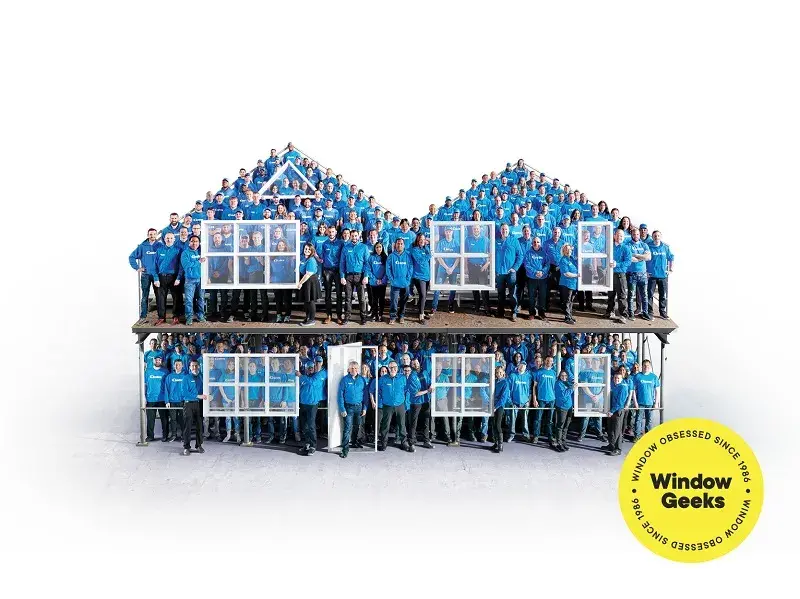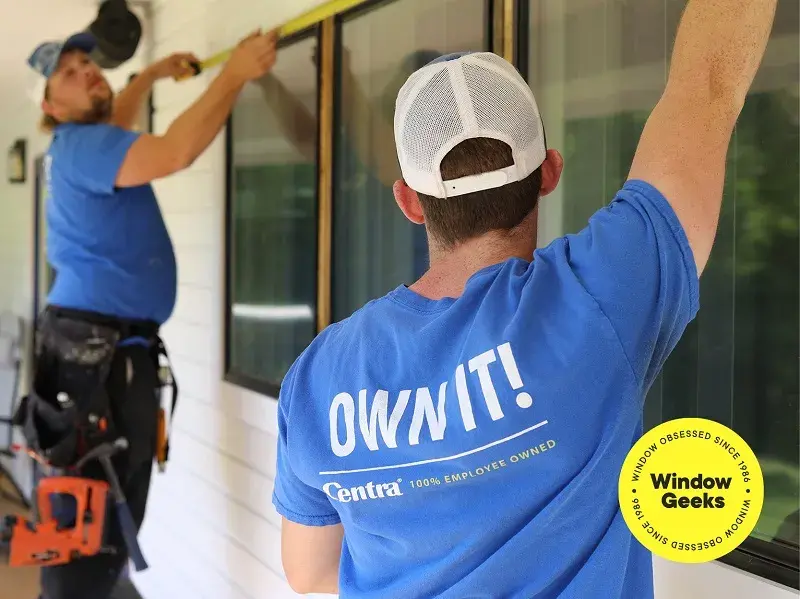Categories
Trending
Comfort In The News
Talking Fall Window Issues with CTV
Budgeting Comfort In The News
Top Tips for Finding a Good Window Warranty
Comfort Energy Savings In The News
Discover Centra’s Supreme Collection Windows: The Best Option for Comfort and Style
Recommended
Master Class
Enforcing AirtightnessMaster Class
Air & Water Tightness and the Building CodeAir & Water Tightness White Paper
Historical vs current (NAFS)
Historically, A ratings have been used for air infiltration/exfiltration, B ratings have been used for water leakage, and C ratings have been used for structural ratings. These were unified in the North American Fenestration Standard (NAFS), specifically for us in the Canadian supplement. NAFS is a standard meant to cover air, water, and structural performance. In this article, we are only covering air/water leakage. Structural performance will be covered at a later date.
Location vs project requirements
We calculate location requirements using the same factors as wind loads. A specifier may determine that this is insufficient for a given project due to risk factors or other reasons. We will endeavour to meet all project requirements, but in some cases, we will recommend design changes or relaxation of these requirements. For example, if we see a 4-panel sliding door specified with a water pressure rating of 400 Pa, we know that this is unfortunately very challenging to achieve. We would thus either recommend a design change or a relaxation of this water pressure rating.
BC Best Practices Guide different barriers (vapour, water, etc.)
The installation of the window or door is crucial in ensuring it performs correctly. Regardless of how air and water-tight the product is, it does not matter if the interface between it and the wall is inadequate. The Best Practices for Window and Door Replacement in Wood-Frame Buildings published by FENBC and BC Housing lists many recommendations in order to ensure the installation performs well. Among these is that the proper critical barriers are in place. This includes:
- Water Shedding Surface
- Water Resistive Barrier
- Air Barrier
- Vapour Barrier
Lab/site testing
It is important to understand that lab tests and site tests are very different when it comes to water penetration. Objectives drive results. In the lab, the objective for everyone is to achieve the highest possible rating. On-site, the objective is to have windows that people like to use and are easy to operate, while also having acceptable performance. In the lab, we do not care how usable windows and doors are. Anything that can be tightened is tightened completely. This may result in a window or door that does not open or close without putting in significant effort. As a result, you can expect that products will have a significantly lower water rating on-site when compared to in the lab. Many other factors also affect site testing, including:
- Product damage during site storage and undue exposure to heat
- Level installation of:
- Frame sill
- Proper shimming
- Frame head
- 3/8” gap for frame movement
- Sash with respect to the frame
- Frame sill
- Plumb:
- Tilt of the window / door with respect to the building facade
- Square:
- Whether the Rough Opening (RO) is adequately sized and square for preventing any undue deflection of the product
- Stress and twisting on the frame due to improper installation
- Cleanliness of the product, seals, and weatherstripping
- Usage of doors before testing by the trades can have an adverse effect on water rating
- If the seals have been pulled out of the product during handling
- Proper alignment of the hardware (locks, snubbers, multipoint locking hardware)
- Equal distribution of the gap between sash and frame for full engagement of bulb seals.
Cladding, or the water-shedding barrier, should technically be in place before testing occurs. They very often aren’t, which can invalidate test results. This is done to avoid excessive rework, but it also means that our products need to perform better than specified in order to meet the requested water ratings.
Failure to perform proper installation can compromise the site water testing results, which has significant monetary impact in terms of testing cost and delay in occupancy permits. We have seen multiple jobs where our product performs well, but there is a failure “through the envelope”. One failure leads to, generally, retesting of the failed window/door plus an agreed-upon number extra per failure. This can quickly balloon to testing and remediating the entire project, hence it is very important to hire properly trained installers. We can work with the installers to provide the necessary guidance and training, mitigating this risk.
Air leakage for windows vs full home blower door tests
Air leakage for windows is measured in a rate per unit area. Air leakage for full homes is typically measured in a rate per unit volume. If you need to compare them, for example, to determine if the air leakage from windows is creating an issue, you need to first ensure that you convert them to equivalent units. Our products generally meet the strictest criteria for window air leakage in Canada, an A3 rating for operable products, and a Fixed rating for non-operable products, with some minor exceptions.
Accessible/profile sill doors
Accessible/Low-profile sill doors perform worse in terms of water penetration. This will always be the case. This is due to the fact that water needs to travel up a much smaller sill in order to breach the door and enter the building. If you imagine a flood, houses on lower ground will experience problems before houses on higher ground. In the same way, low-profile sills will experience problems with water penetration before standard sills. To account for this, low-profile sills only perform up to “Limited Water”. Therefore, when selecting which type of door you want, you need to consider factors such as the risk of the area (mitigation by overhang, Driving Rain Wind Pressure (DRWP) in the area, etc.), as well as your priorities.
Casement/awning vs slider
Casement and awning windows perform better than sliding windows in terms of water penetration. This is due to the way the seals work and how pressure is applied to them. This means that if your performance expectations in this area exceed a certain threshold (330 Pa), we would recommend against sliding windows.
Windows vs doors
Windows have had a history of water testing, and we are thus able to predict their achievable performance on-site. Doors, on the other hand, have up till recently, generally not been tested. The usage for doors is also extremely different from windows. Even before residents move in, the contractor will generally have used doors to carry items back and forth multiple times, which may have resulted in incidental damage. Even though our doors are able to achieve a higher water rating in the lab than our windows, their performance on-site tends to be worse due to this and other installation issues.
Become an Expert with the Window Geeks: Master Class
Be sure to sign up for our Master Class to follow along. Have a project you're working on? Reach out to the Window Geeks early in the process and let’s make sure it's a success together.



